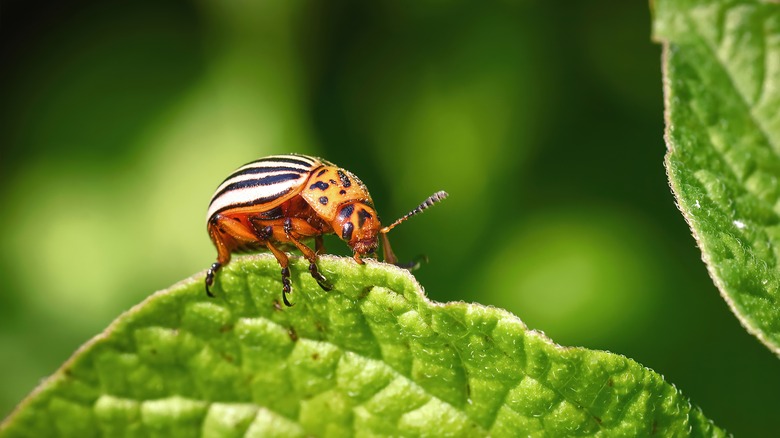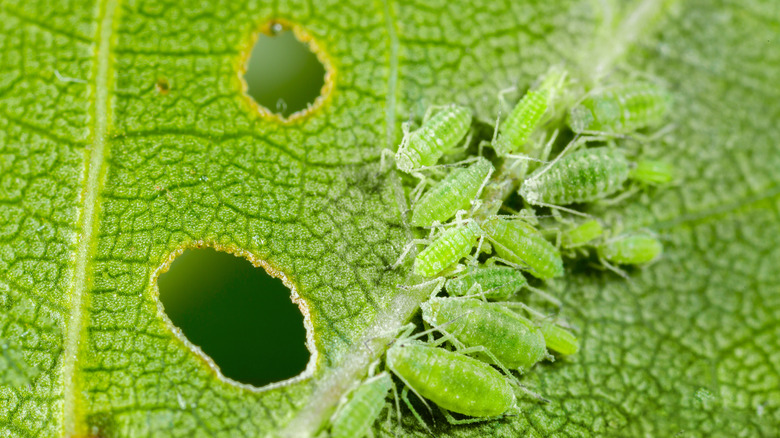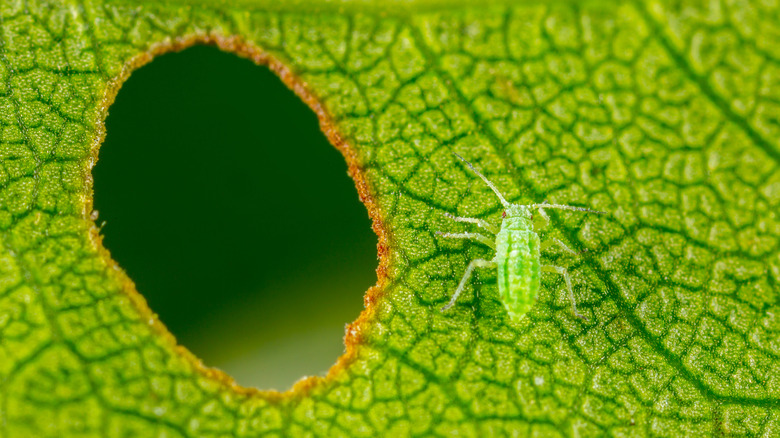The Best Method To Keep Pests Off Of Your Property
Insects have been at war with gardeners since gardeners and insects have existed. With the approach of warmer weather, more insects will emerge, some of which may become garden pests. According to Eartheasy, there are many ways to fight pests, including using soapy water, cucumbers, mint tea, garlic, and even certain oils. However, one of the most affordable and effective methods of pest control is using homemade traps. The best part is that they don't always take a lot of effort to make.
Homemade traps can not only be used to trap those crafty insects but can also help with predicting things like an increasing population of a certain species. One method to keep track of the pest population is to keep a count, as Kemin explains. They suggest counting bugs per inch on flypaper, but similar counting methods can be used with DIY traps of all kinds. While they rarely appear to be the easiest to make, they can typically be built with things you already have.
There are a number of DIY traps out there, but here's one that we think works best.
Yellow pan traps for aphids
Getting rid of aphids can be a pain. But you've undoubtedly seen a yellow pan trap in action if you've ever left a yellow bucket full of water sitting in your garden. Yellow attracts insects, but upon approaching the yellow bucket, they get trapped in the water. You might be thinking that the bugs can swim and would just get back out when they're done with their leisure. Well, the trick is to add a few drops of liquid soap to the water in the pan trap. This will hinder their ability to swim, making them drown faster, explains AphidTrek.
Aphids and other tiny insects can be caught in shallow containers such as yellow frisbees, but larger bugs and insects can be caught in deeper vessels that hold more than two inches of water. AphidTrek emphasizes that you consider the climate you are in because you might need more water in dry zones. This DIY pest trap is probably one of the easiest out there to set up — after all, all you will need is a yellow bucket, water, and some soap. There's a change you already have these things lying around, so you can set one up right now.
Making the most out of your trap
As with anything, yellow pan traps come with a few steps you can take to maximize their usefulness. You might wonder, what if you set a trap and nothing comes of it? That's okay. AphidTrek suggests waiting a week or two while making sure to refill your yellow bucket regularly to make sure your trap is kept working before monitoring again, and keeping an eye on your plants for symptoms of aphid infestation. With just a few traps littered around your garden, you're bound to catch those nasty aphids sooner or later. Patience is key.
It is also worth noting that, along with your pan trap for aphids, you might want to consider if you could have an ant problem. As Joshua's Pest Control explains, aphid honeydew is a favorite of ants, and they'll go to great lengths to safeguard it from the aphids' natural enemies. So if you get rid of your ant problem, you might be doing yourself a favor.


